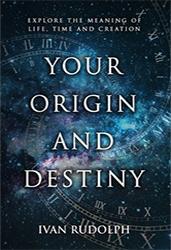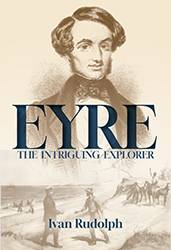Indigenous Lifestyles
Over the years, Eyre made notes on many things he saw. He cast a romantic eye on bush life, as seen in his descriptions of Aborigines in canoes fishing at night. Pieces of burning, glowing timber provided lights to steer the canoes by:
It has a singular and powerful effect upon the imagination, to witness at midnight a fleet of these canoes, gliding about in the distance like so many balls of fire, imparting a still deeper shade to the gloom of darkness which surrounds the spectator, and throwing an air of romance on the whole scene. Occasionally in travelling at night, and coming suddenly upon the river from the scrub behind, I have been dazzled and enchanted with the fairy sight that has burst upon me. The waters have been alive with brilliant fires, moving to and fro in every direction, like meteors from a marsh, and like those too, rapidly and inexplicably disappearing when the footsteps of strangers are heard approaching.
Some of the burial customs he came across seemed to his western eye to be bizarre, but Eyre recorded them nevertheless. “Children under four years are not buried for some months after death. They are carefully wrapped up, carried upon the back of the mother by day, and used as a pillow by night until they become quite dry and mummy-like, after which they are buried.” Older children and adults were buried in various ways depending on the tribe, and often with protracted ceremony and mourning, but not always.
A poor old woman had been deserted by the natives of Moorundi, and died a few days after being brought up to the station, I had great difficulty in getting the other natives to bury her, they would on no account touch the body; but after digging a hole, they got a long wiry branch of a tree, and one man taking hold of each end they bent the middle round the old woman’s neck, and thus dragged her along the ground and threw her into the pit like a dog, all the time violently and continually spitting out in every direction to ward off, as they said, the infection.
Nor were the bones of the dead always treated with respect. “I have frequently seen them handling them, or kicking them with the foot with great indifference.” Perhaps this was as a consequence of the belief that the dead person’s spirit had already left the vicinity by then and was no longer a threat.
In Aboriginal culture, trouble followed an unexpected death because sorcery was always suspected. Eyre’s interpreter and friend Tenbury became embroiled in one such case while Eyre watched anxiously.
A relative of Tenbury, one of the principal natives of the Murray, had died when he was absent, and the son of the deceased was too young to revenge the sorcery, which it was imagined had caused his father’s death. It therefore became Tenbury’s duty to do this upon the first occasion that offered. I was with him when the parties first came into the neighbourhood and I witnessed the proceedings.
Notice had been sent by Tenbury the evening before to warn them to be ready.
I accompanied him early in the morning towards the encampment of the natives, situated in a hollow near the water. When within about a hundred yards we saw from the rise all the natives seated below us in the valley.
Tenbury now halted, and having taken a hasty survey of the group hung down his head upon his breast and raised a low mournful lamentation. After a time it ceased and the wail was at once replied to and continued by women’s voices in the camp.
He now hastily went down to the camp still uttering his lamentations, and the whole body rose at his approach and formed a large open circle around him. The natives who were supposed to have caused the death of his friend formed a part of the circle and were armed with spears; behind them stood the orphan son of the deceased, probably in the light of an accuser, and behind the son were the widows, wailing and lamenting bitterly.
After taking the centre of the circle, Tenbury called for a spear, but no one offered one. He therefore took a long one from a native in the ring, who had evidently brought it for that purpose and yielded it unresistingly.
Pacing with this weapon furiously up and down the circle, he advanced and retreated before the accused, brandishing the spear at them and alternately threatening and wailing. No one replied, but the melancholy dirge was still kept up by the widows in the rear.
After sufficiently exciting himself in this manner for some time, he advanced with uplifted spear, and successively repeating his blows speared four or five persons among the accused natives in the left arm, each of them pushing forward his arm unflinchingly for the blow as he advanced upon them.
Tenbury now again hung down his head and took up his lamentation for a short time, after which he paced about rapidly, vehemently haranguing, and violently gesticulating, and concluded by ordering all the natives present to separate.
While he noticed many characteristics common to Aborigines living far apart geographically, Eyre also recorded differences. For example, he noticed in February 1840 how well the indigenous people swam in the waters of King George Sound, and was surprised when told they had not been able to before the advent of the white man to that region.
“This seems hardly probable. However, upon the sea-coast; at all events, be this as it may, they all swim now.”
Eyre’s surprise stemmed from having watched Aborigines swimming in the mighty Murray, sometimes diving deep under the water for fish. They had done so long before the colonials arrived.
Later on during the overlanding to Perth, the theory that the whites had taught the locals to swim received support when he and his friends cooled down in some pools, to the consternation of the watching tribe, “who seemed a good deal astonished at our venturing into the small ponds.” How different to the indigenous people near Moorundi!
Eyre observed other interesting differences. For example, the West Australian Aborigines caught kangaroos using a trap system near pools of water. Deep pits, with tops disguised by sticks, were dug from which a kangaroo could not extricate itself when it fell in.
Another difference was that his interpreter, the cheerful Wylie, could understand the dialect spoken throughout the journey to Perth because it changed so little. Eyre was used to radical variations in dialects over short distances.
“A strong illustration of this occurs at Moorundi, where three dialects meet, varying so much from each other that no native of any one of the three tribes can understand a single word spoken by the other two, except he has learnt their languages as those of a foreign people.”
Towards the end of his time in Australia, Eyre decided to turn his many observations into a book about the Aborigines. To this end, he began to gather artefacts, including weapons and a skull that had been turned into a drinking vessel by closing the sutures with tree gum.
Amongst the artefacts he described was the rokko, or net bag, in which the women carried the worldly property of the family. His curiosity inspired him to ask to look inside these and record what he saw – “shells and pieces of flint for knives, bones for needles, sinews of animals for thread, fat and red ochre for adorning the person, spare ornaments or belts, white pigment for painting for the dance, a skin for carrying water, a stone for pounding roots, the sacred implements of the husband carefully folded up and concealed, a stone hatchet and many other similar articles. The size of the rokko varies according to the wealth of the family; it is sometimes very large and weighty when filled.”



